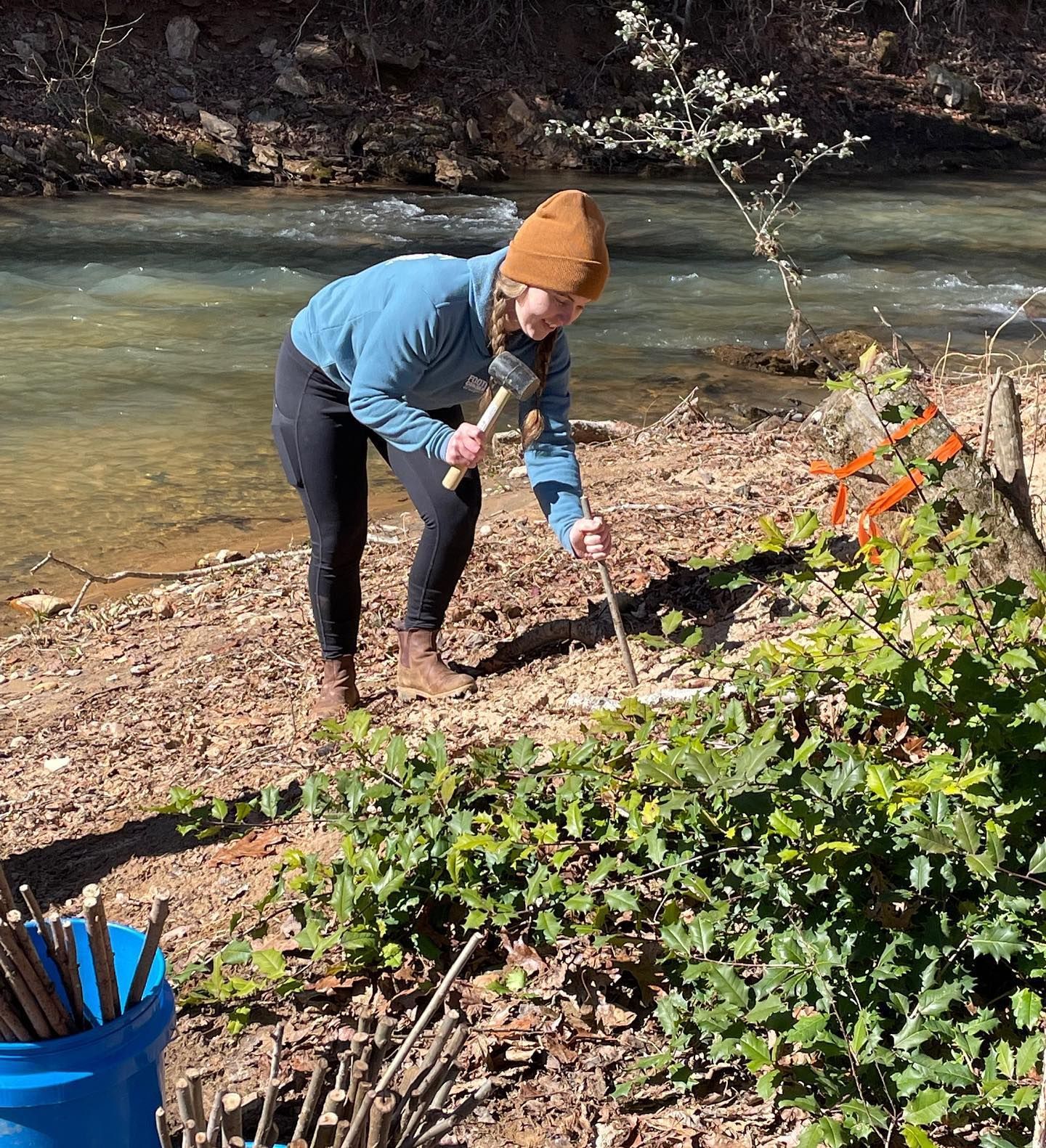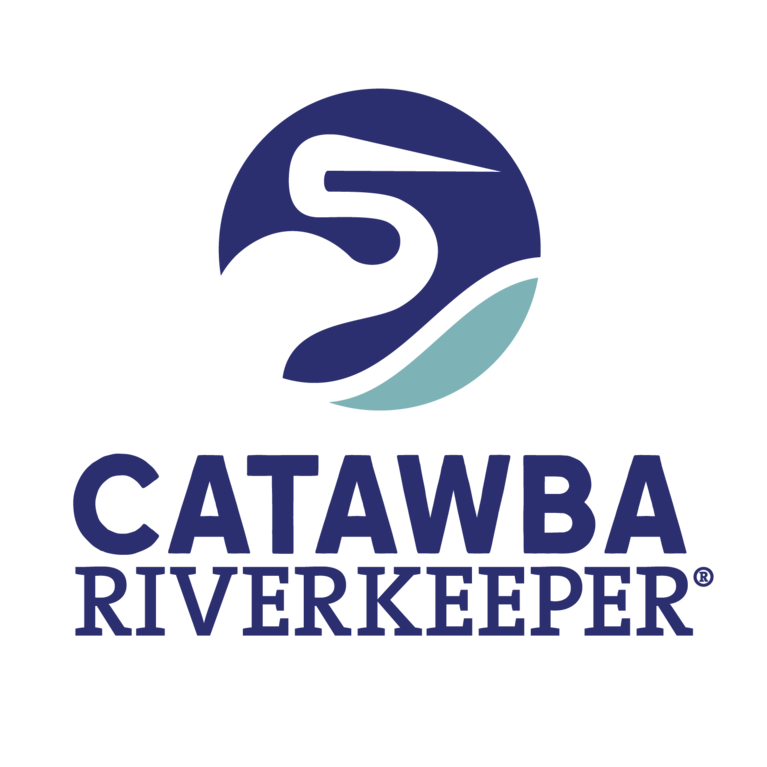Catawba Riverkeeper
Restoration
Catawba Riverkeeper Foundation
Restoration
It’s not enough to prevent future pollution. In order to truly improve water quality, we must restore the waterways of the Catawba-Wateree River basin.
Through watershed planning, Catawba Riverkeeper scientists are identifying potential streams, creeks, and shorelines for restoration. Once identified a plan is created to collect data and unlock grant funding for restoration projects.
Examples of restoration projects include: stream bank and shoreline stabilization, Spider Lily propagation, Beaver Dam Analog construction, and the "re-nativization" of the Outdoor Classroom.
You can read about other potential restoration projects in the Northern Catawba and Southern Catawba and Wateree Basins Protection and Restoration Plans.
Restoration Projects:
-
Lake Wateree Shoreline Stabilization
While water levels on Lake Wateree are low due to dam improvements, Catawba Riverkeeper will assist residents in planting native plant species on their private property and mobilize volunteers to undertake stabilization and habitat enhancement efforts across public, private, and government owned lands.
We'll multiple volunteer workdays during the end of February-early March before the water rises to normal levels. If you’re interested in being involved in this pilot live staking project, please see our main Community Science page to sign up for a volunteer day.
Our objective is to increase understanding among residents about the significance of native plants, their root systems, and how enhancing habitats for local species contributes to the overall health of the lake.
-
Spider Lily Propagation
The Rocky Shoals Spider Lily project aims to establish a population of this native plant in the reestablished habitat on the Long Reach Bypass (LRB) of the Great Falls project. The LRB below the Fishing Creek Dam, previously devoid of an aquatic ecosystem due to being dewatered for over a century, experienced a change in its status during a recent relicensing. This alteration mandated a minimum daily flow from the dam into the channel adjacent to a newly constructed switchback whitewater recreation channel.
Comprised of mostly rocky sublayers with constantly flowing water, this habitat is perfect for the Rocky Shoals Spider Lily. Interestingly, there are only two known nearby populations of this species. The largest population in the world exists approximately 14 miles upstream at Landsford Canal State Park (see our Recreation page for guided trips down this beautiful section), with another small population downstream where water from Stumpy Pond reaches the shoals.
In collaboration with experienced professionals, our initiative involves propagating this plant in new locations.
The project includes the implementation of autonomous sensing technology for regular data collection, allowing continuous monitoring of conditions vital for the spider lilies, which are highly sensitive to changes in dissolved oxygen and drying out. This plant typically blooms from May to June and produces seed pods at the end of June to July. This is when we will work with Clemson University and volunteers to collect and transport the seeds to the LRB. This process will be repeated on multiple field days to maximize success and minimize potential harm to the existing lily population.
Beyond their environmental significance, Rocky Shoals Spider holds social, cultural, and economic value, as evident in the population at Landsford Canal State Park. Both residents and tourists can engage with this unique species of lily, allowing Catawba Riverkeeper to educate about the importance of the native plant species and their contributions to local native wildlife.
-
Beaver Dam Analogs
Beavers have proven to play a significant role in the health of our river systems with dams being known to contribute to slowing down water runoff, increasing ground water infiltration, acting as a natural water filter, and reducing bank erosion and sedimentation. Emerging research from out West involving creating “fake” beaver dams has allowed beavers to recolonize streams, bringing along benefits such as these. After extensive research, our Northern Basin Manager had to ask, will this work in the Southeast? In an effort to answer that question, we’ve piloted one of only a few Beaver Dam Analog (BDA) projects in the entire Southeast!
In March of 2023, a group of intrepid Beaver-wannabe volunteers ventured to a Foothills Conservancy property in Morganton, NC to construct 7 BDAs. These structures have been consistently monitored since installation and we’re thrilled to report that despite high flows from summer rainstorms and the lack of rainfall in the fall, all but 1 remain intact!
Ongoing studies are investigating the impact BDAs have on water quality, fish, macroinvertebrates, amphibians, and most importantly sediment. While we’re awaiting more comprehensive data, we’re pleased to announce that these BDAs have effectively trapped and stored sediment, preventing its downstream transport. In doing so, they’ve contributed to raising the streambed level bringing it closer to a healthier state, allowing it access to its natural floodplain. Furthermore, these structures have significantly diminished the stream’s erosive force.
While there are no active signs of beavers, game cameras have revealed that the dams are popular spots for racoons and various small mammals. We will continue to monitor these structures and rebuild them as necessary to ensure a successful stream restoration. Thank you everyone who has helped make this project successful. This endeavor serves as a cornerstone for future restoration efforts using BDAs!
-
Outdoor Classroom "Re-nativizaion"
The goal of the “re-nativization” project is to restore the 5-acre Outdoor Classroom in Fort Lawn, SC to its original native prairie landscape, while also establishing a safe and ethical way for visitors to explore the property. This comprehensive project involves several stages, including clearing the existing vegetation, replanting with native species, eradicating invasive plants from the wooded areas, and eventually constructing a boardwalk to preserve the ecosystem while enabling visitors to appreciate the native environment.
We aim to organize multiple volunteer workdays to eliminate the invasive plants that have overrun the property and replace them with native species. This approach is crucial for maintaining the environment and preserving the Catawba River’s quality and quantity in the area. Once this is complete, the subsequent phase involves building a protective boardwalk, which will safeguard these plants while offering the community a secure space to engage with and learn from the environment. However, this final stage awaits funding or the donation of necessary materials and labor.
Stay tuned for updates as this project gets off the ground this Spring!
-
Northern Catawba Basin Protection Plan
Catawba Riverkeeper published the “Northern Catawba Basin Protection and Restoration Plan,” which identifies potential projects that would improve water quality across the mountains and foothills portions of the basin in North Carolina.
-
Southern Catawba and Wateree Protection Plan
Catawba Riverkeeper published the “Southern Catawba and Wateree Basins Protection and Restoration Plan,” which identifies potential projects that would improve water quality across the mountains and foothills portions of the basin in North Carolina.
See our Advocacy Guide to learn how you can speak up for clean water.
Support Our Foundation
Let's protect the Catawba River!
The Catawba Riverkeeper Foundation is working towards clean, plentiful water now and for generations to come.
Join Us Today
Subscribe to our mailing list.
Explore
Contact Information
102 Main Street, Suite 100, McAdenville, NC 28101
All Rights Reserved | Catawba Riverkeeper







